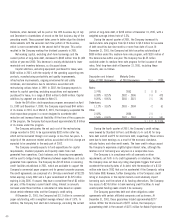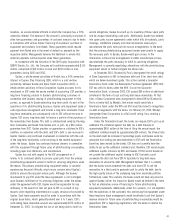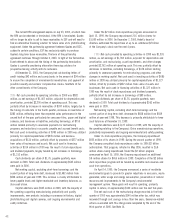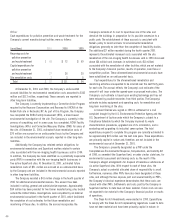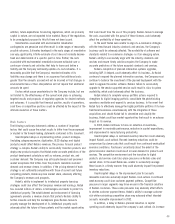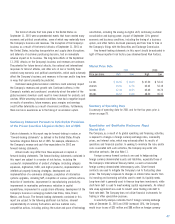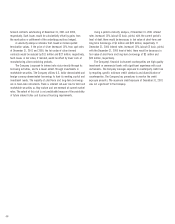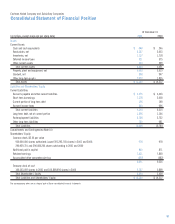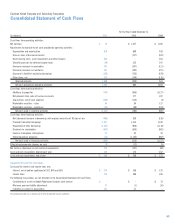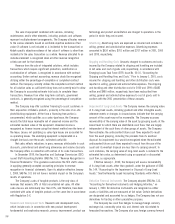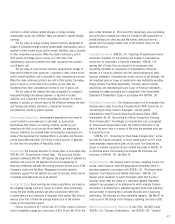Kodak 2001 Annual Report Download - page 50
Download and view the complete annual report
Please find page 50 of the 2001 Kodak annual report below. You can navigate through the pages in the report by either clicking on the pages listed below, or by using the keyword search tool below to find specific information within the annual report.
48
forward contracts outstanding at December 31, 2001 and 2000,
respectively. Such losses would be substantially offset by gains from
the revaluation or settlement of the underlying positions hedged.
A sensitivity analysis indicates that, based on broker-quoted
termination values, if the price of silver decreased 10% from spot rates
at December 31, 2001 and 2000, the fair value of silver forward
contracts would be reduced by $11 million and $27 million, respectively.
Such losses in fair value, if realized, would be offset by lower costs of
manufacturing silver-containing products.
The Company is exposed to interest rate risk primarily through its
borrowing activities, and to a lesser extent, through investments in
marketable securities. The Company utilizes U.S. dollar denominated and
foreign currency denominated borrowings to fund its working capital and
investment needs. The majority of short-term and long-term borrowings
are in fixed-rate instruments. There is inherent roll-over risk for debt and
marketable securities as they mature and are renewed at current market
rates. The extent of this risk is not predictable because of the variability
of future interest rates and business financing requirements.
Using a yield-to-maturity analysis, if December 31, 2001 interest
rates increased 10% (about 43 basis points) with the current period’s
level of debt, there would be decreases in fair value of short-term and
long-term borrowings of $1 million and $28 million, respectively. If
December 31, 2000 interest rates increased 10% (about 62 basis points)
with the December 31, 2000 level of debt, there would be decreases in
fair value of short-term and long-term borrowings of $2 million and
$20 million, respectively.
The Company’s financial instrument counterparties are high-quality
investment or commercial banks with significant experience with such
instruments. The Company manages exposure to counterparty credit risk
by requiring specific minimum credit standards and diversification of
counterparties. The Company has procedures to monitor the credit
exposure amounts. The maximum credit exposure at December 31, 2001
was not significant to the Company.




